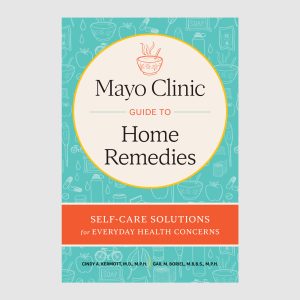
Millions of women* are affected by osteoporosis, a medical condition that affects bone strength. The bones become so weak and fragile that even a movement like a cough can break a bone.
Before effective treatments were available, numerous people with osteoporosis faced debilitating fractures — often in the wrist, spine or hip. Sometimes fractures occurred from the slightest mishap. These fractures not only diminished quality of life but were even life-threatening in severe cases. That’s why recognizing and treating osteoporosis is essential to safeguarding your bone health and maintaining an active, vibrant life.
Today, there are many effective osteoporosis treatment options, including the most popular medications, bisphosphonates. But if you’ve been taking bisphosphonates for a few years, your healthcare team may instruct you to take a break from the drug. Learn more about the reasons for these “drug holidays” and what to expect.
A look at osteoporosis medications
The skeleton system constantly renews itself, with bone cells called osteoclasts breaking down old bone. Then osteoblast cells form new bone. This process, called bone remodeling, helps the body maintain lifelong strong, healthy bone.
Bone remodeling is finely tuned by various hormones and signals in the body, such as estrogen, parathyroid hormones and complex signals from other organs such as muscle to keep bones strong.
But aging can disrupt this balance. That can lead to more bone breakdown and less bone building. The result is porous, fragile bones known as osteoporosis. But research has led to treatments that can target specific parts of the remodeling process and help restore balance.
In the United States, the FDA has approved four primary types of drugs for osteoporosis treatments. The first is bisphosphonates. Bisphosphonates are available in various forms called Alendronate (Fosamax), Risedronate (Actonel), Ibandronate (Boniva), and the intravenous form Zoledronic acid (Reclast). They integrate directly into the bone tissue during the bone breakdown cycle, effectively stopping further deterioration. That gives the body time to rebuild.
Bisphosphonates’ high affinity for bone and their accumulation in bone tissue enable gradual withdrawal, allowing for strategic “drug holidays” in treatment. This phased approach helps reset bone dynamics, while residual medication continues to provide ongoing bone protection for several years.
Since other FDA-approved osteoporosis treatments including Denosumab (Prolia), Teriparatide (Forteo, Bonsity), Abaloparatide (Tymlos) and Romosozumab (Evenity) work differently, stopping those medications would also end the benefit. So drug holidays are only for people taking bisphosphonates.
The benefits and risks of bisphosphonates
Bisphosphonates work by slowing bone breakdown. This provides more time for the bone to build and fill in. Bisphosphonate was introduced in the 1970s as a treatment for excessive calcium in the blood (hypercalcemia), but the medication showed to be protective against osteoporosis.
When used consistently, bisphosphonates can help reduce bone fractures by 30% to 60% while stabilizing and improving bone strength, according to high-quality research studies. Let’s say that your risk of breaking your spine is predicted to be 20%, which is high risk. By taking bisphosphonate, you effectively reduce your risk approximately by half, around 8% to 10%, which brings you to low fracture risk. That allows you to lead your best life without worrying about breaking your spine. Your healthcare provider can help you understand your risk and how medications would help you.
The optimal duration of oral bisphosphonate therapy is typically 5 to 10 years, and for intravenous (IV) bisphosphonates it’s 3 to 6 years. This varies based on your individual fracture risk at one time. Beyond this, a “drug holiday” or withdrawal period is recommended to prevent harmful accumulation of the medicine. After this break, bisphosphonates are often resumed without long-term complications, after proper time lapsed for the natural remodeling process to reset and function normally.
Side effects of bisphosphonate use
Osteonecrosis of the jaw (ONJ) and atypical femur fractures are rare but serious side effects associated with prolonged bisphosphonate use. ONJ occurs when the jawbone becomes exposed and doesn’t heal properly, often after invasive oral surgery or dental trauma. Bisphosphonates, which strengthen bones, can inhibit the necessary bone breakdown for healing after dental trauma. Good dental hygiene and informing dentists about bisphosphonate use can minimize this risk. Minor dental procedures such as fillings, crowns and root canals are not associated with ONJ.
Atypical femur fractures, occurring with minimal or no trauma, are rare complication of long-term bisphosphonate therapy. These fractures occur usually below the hip joint (mid-thigh) and differ from typical osteoporosis occurring around the hip joint with major trauma such as falls. Proper management of medicine duration is very important in preventing these conditions.
Taking a break: A bisphosphonate drug holiday
This is where a “drug holiday” may be helpful. A drug holiday refers to a prescribed period when a patient takes a break from a specific medication. A bisphosphonate drug holiday allows time for the medicine to be removed from the bone and reestablishes the normal bone remodeling cycle. This typically takes 2 to 5 years.
Many studies have shown that a drug holiday significantly reduces the risk of complications from bisphosphonate medication. Even stopping bisphosphonates for one year reduces risk of atypical femur fracture by 70%. It is important to realize the risk of serious side effects with taking bisphosphonates is already quite low at 0.01% for atypical femur fracture and 0.01% for osteonecrosis of the jaw when bisphosphonates are used long term. Several studies have suggested that limiting the duration of bisphosphonates harnesses the drugs’ potency while sidestepping prolonged complications.
However, an osteoporosis drug holiday is only applicable to bisphosphonate drugs and not to any other osteoporosis medications. That’s because bisphosphonates work differently from other osteoporosis drugs.
Bisphosphonates function by firmly attaching to the affected bone areas to prevent further bone breakdown. So even when you stop taking the drug, this newly built bone stays in place, as bisphosphonates take several years to completely get out of the bone.
What to expect during a drug holiday
A drug holiday is more than taking a break from your medication; it’s an opportunity to fine-tune your overall bone health strategy.
During your drug holiday, your healthcare team should recommend that you maximize lifestyle strategies for bone health, including:
- Adequate vitamin D and calcium intake from diet and supplements.
- Regularly exercise for at least 30 to 40 minutes most days of the week, including weight-bearing and resistance training exercises.
- Avoiding behaviors that negatively affect the bone such as smoking and drinking excess alcohol.
- Getting regular checkups to watch for changes in your health or symptoms, such as new fractures.
Let your healthcare team know if you’re taking any long-term medicines that can affect the bone, such as steroids or certain cancer treatments. You also are likely to be routinely monitored with bone density scans to watch for any bone density decline. A decline may indicate the release of bisphosphonate from the bone and the need to reconsider treatment again.
While on a drug holiday, active participation in your health and consistent collaboration with your healthcare team will be your best bet for optimal outcomes and safety for your bones.
The big picture
Osteoporosis can even affect people who lead healthy lifestyles. Medicine is often necessary to prevent complications. While the medicines have potential side effects, the latest research has greatly expanded our understanding of osteoporosis medicines. With that new information, we can use strategies like drug holidays to optimize the medicine’s benefits — while minimizing the rare but serious potential risks.
*For the purposes of this post, the term woman is used to refer to assigned females at birth. People assigned male at birth also can experience osteoporosis.

Relevant reading
Period.
Backed by the experts at Mayo Clinic, PERIOD. is the no-nonsense guide kids and caregivers alike can trust to navigate menstruation, period.





















